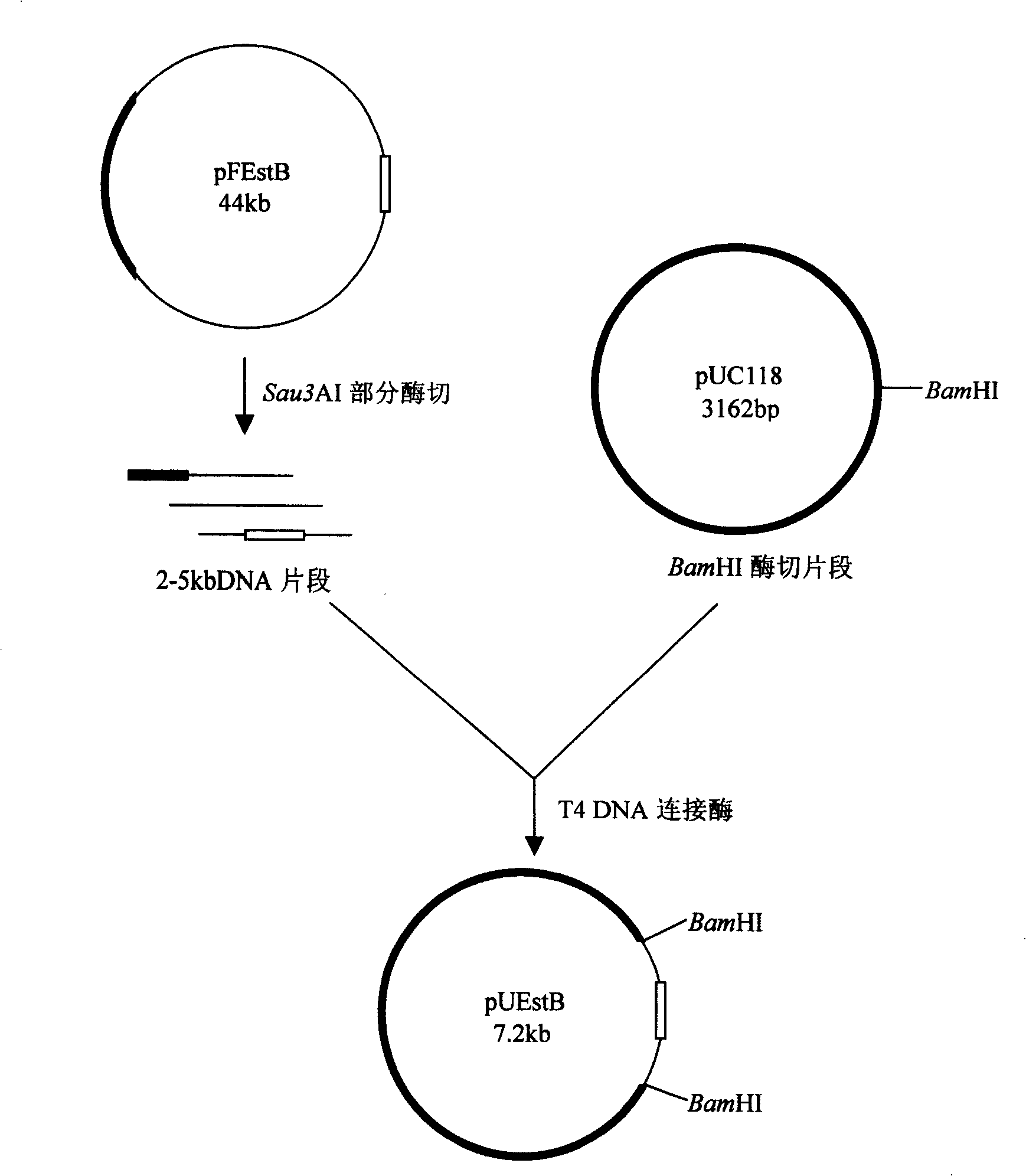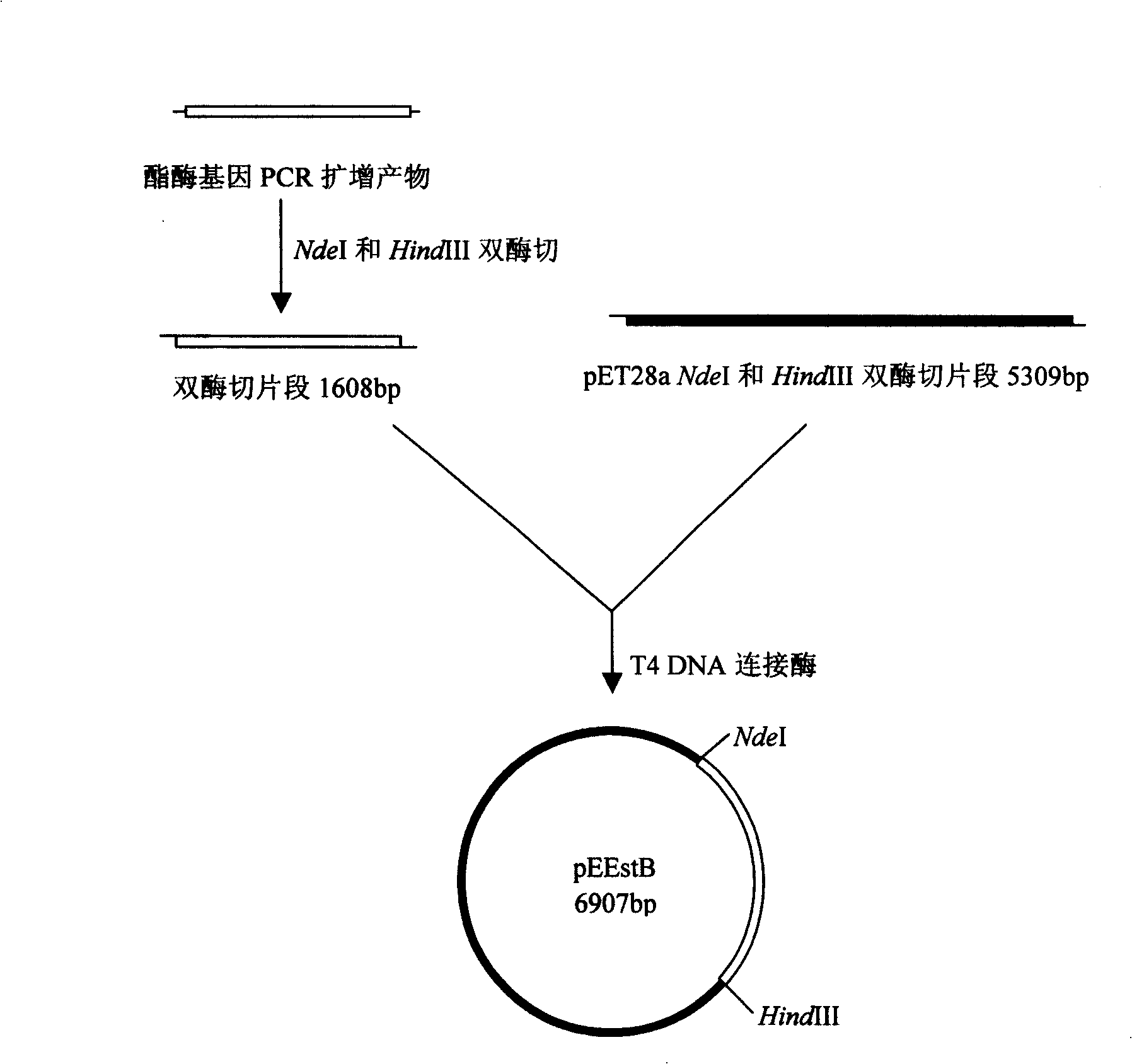Esterase, encoding genes and use thereof
A technology of encoding genes and genes, which is applied in the fields of application, genetic engineering, plant genetic improvement, etc., can solve the problems of unseparated culture of microorganisms, difficulties in the isolation and cultivation of extremophiles, restrictions on the development and application of esterase genes of extremophiles, and achieve Effect of good activity and stability
- Summary
- Abstract
- Description
- Claims
- Application Information
AI Technical Summary
Problems solved by technology
Method used
Image
Examples
Embodiment 2
[0039] Example 2, the acquisition of EstB gene and its functional verification
[0040] 1) Acquisition of EstB gene
[0041] Artificially synthesize the DNA molecule of sequence 1 in the sequence list, and add NdeI recognition sequence and HindIII recognition sequence at both ends of the sequence respectively. The plasmid pET28a was ligated overnight at 16°C under the action of T4 DNA ligase to obtain the recombinant plasmid pEEstB, image 3 It is a schematic diagram of the construction of the recombinant plasmid pEEstB. The recombinant plasmid pEEstB is transformed into competent Escherichia coli BL21, spread on LB medium containing 50 μl / ml kanamycin, and cultivated at 37°C for 16 hours. The positive clones were screened by colony PCR, and the obtained positive clones were named BL21EstB. Competent Escherichia coli BL21 was transformed with vector pET28a, and the recombinant strain BL21-28a obtained was used as a control.
[0042] Single colonies of recombinant bacteria B...
PUM
| Property | Measurement | Unit |
|---|---|---|
| molecular weight | aaaaa | aaaaa |
Abstract
Description
Claims
Application Information
 Login to View More
Login to View More - R&D
- Intellectual Property
- Life Sciences
- Materials
- Tech Scout
- Unparalleled Data Quality
- Higher Quality Content
- 60% Fewer Hallucinations
Browse by: Latest US Patents, China's latest patents, Technical Efficacy Thesaurus, Application Domain, Technology Topic, Popular Technical Reports.
© 2025 PatSnap. All rights reserved.Legal|Privacy policy|Modern Slavery Act Transparency Statement|Sitemap|About US| Contact US: help@patsnap.com



